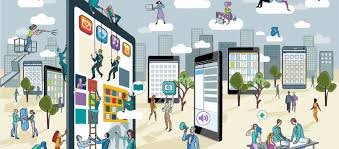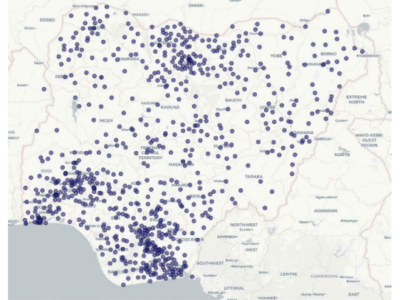By Chris Keene
A great overview by Gigster CEO Chris Keene on how the gig economy is transforming work in the enterprise by making it more customer-centric and high performance. Don’t miss the stories of companies actually doing this.” Dion Hintchcliffe, Vice President and Principal Analyst, Constellation Research
As software continues to eat the world, companies must find ways to build more innovative teams. For these companies, The Future of Work is here today. How companies reshape the way they engage digital talent will have a huge impact on their ability to innovate. Here are six ways digital leaders are creating The Future of Work now.
1. Remote workers and work from home teams are the new normal
The best talent is not always located where you are. Even within a company, silos can prevent the right people from working on the most critical innovation projects. Making it possible for team members to work remotely is the only way to liberate talent across the company. This is also the only way to source critical skill gaps that are not available inside the company, like AI/ML engineers. Supporting distributed teams calls for adopting a common set of processes and collaboration tools, including Slack, Github and Jira.
2. Hybrid teams beat monoculture teams
Innovation requires a diverse mix of talent. The most innovative teams blend in-house employees who have industry context with expert global talent who have advanced technical skills. This is the opposite of the traditional systems integration model that outsources innovation. Hybrid teams also have the value of helping companies build in-house skills by working side by side with expert freelance talent.
3. Elastic Staffing beats fixed staffing
Many companies adopt agile team processes but staff teams inefficiently — they follow a fixed staffing model that allocates each role as a full-time position for the duration of a project. This is only half agile. Because it makes experimentation too expensive to try, and reduces employee mobility and satisfaction. Compare this to Elastic Staffing, which allocates resources based on the workload for each project phase. For example, developers can join a project after the detailed design is complete, and technical architects may only be needed part time. Elastic Staffing can reduce the total hours to deliver innovative products by over 50%.
4. Employees want to be treated more like freelancers
Top employees want the freedom and flexibility to choose how they work and what they work on. This doesn’t have to require radical organizational changes. For example, applying the Google 20% rule, where workers can choose their own projects 20% of the time, can boost morale and build skills. This lets more senior employees peer review deliverables from other projects to reduce risk. It also helps more junior employees grow by being exposed to new business and technology challenges.
5. Freelancers want to be treated more like employees
Top freelancers want stability and work benefits without sacrificing their flexibility. Companies that learn how to work effectively with freelancers will have their pick of the best global talent. This includes setting up projects for success with distributed teams, incorporating advanced technologies, and providing predictability for freelancers that helps them plan effectively. In California, laws like AB5 are beginning to mandate providing more benefits for freelance workers, and putting them more on par with the benefits that full-time employees receive.
6. Automated team and talent assessments are here
Technology will ultimately reshape jobs, but today, technology is reshaping talent ratings. Every collaborative tool – from Slack, to Jira, to Github – has open APIs that can automatically collect data about the productivity and quality of work being produced by people and teams. Tools like Pinpoint can collect this data. Applying analytics to this data enables the creation of “karma scores” by person and by team, to provide objective and trusted evaluation of skills.
Examples of The Future of Work today
A global telco created hybrid teams that mix in-house staff with top global experts to accelerate their machine learning and predictive analytics initiatives. They manage these distributed teams following Silicon Valley best practices and have been able to deliver new applications that leverage AI up to twice as fast as traditional in-house development teams.
One of the world’s largest digital agencies created an entirely new digital transformation business unit using hybrid teams that blend employees and global freelance talent. This approach enabled them to onboard over 100 engineers in less than six months, with minimal recruiting costs.
Summary
The Future of Work describes a cultural shift that companies must adopt to grow their innovation capacity. The pace of those changes is accelerating as more companies adopt new work from home rules that support remote workers. Companies that embrace a Silicon Valley-style culture of innovation can become more customer-centered, more able to tap new talent pools, and to dramatically reduce risk.

As CEO, Chris drives Gigster’s vision to de-risk digital innovation. Chris was previously VP Cloud for VMware, where he led the $400 million Pivotal spinout. Chris also founded and took public Persistence Software (NASDAQ:PRSW)
Courtesy: Gigster, https://gigster.com/thought-leadership/6-signs-that-the-future-of-work-is-here-today/





























